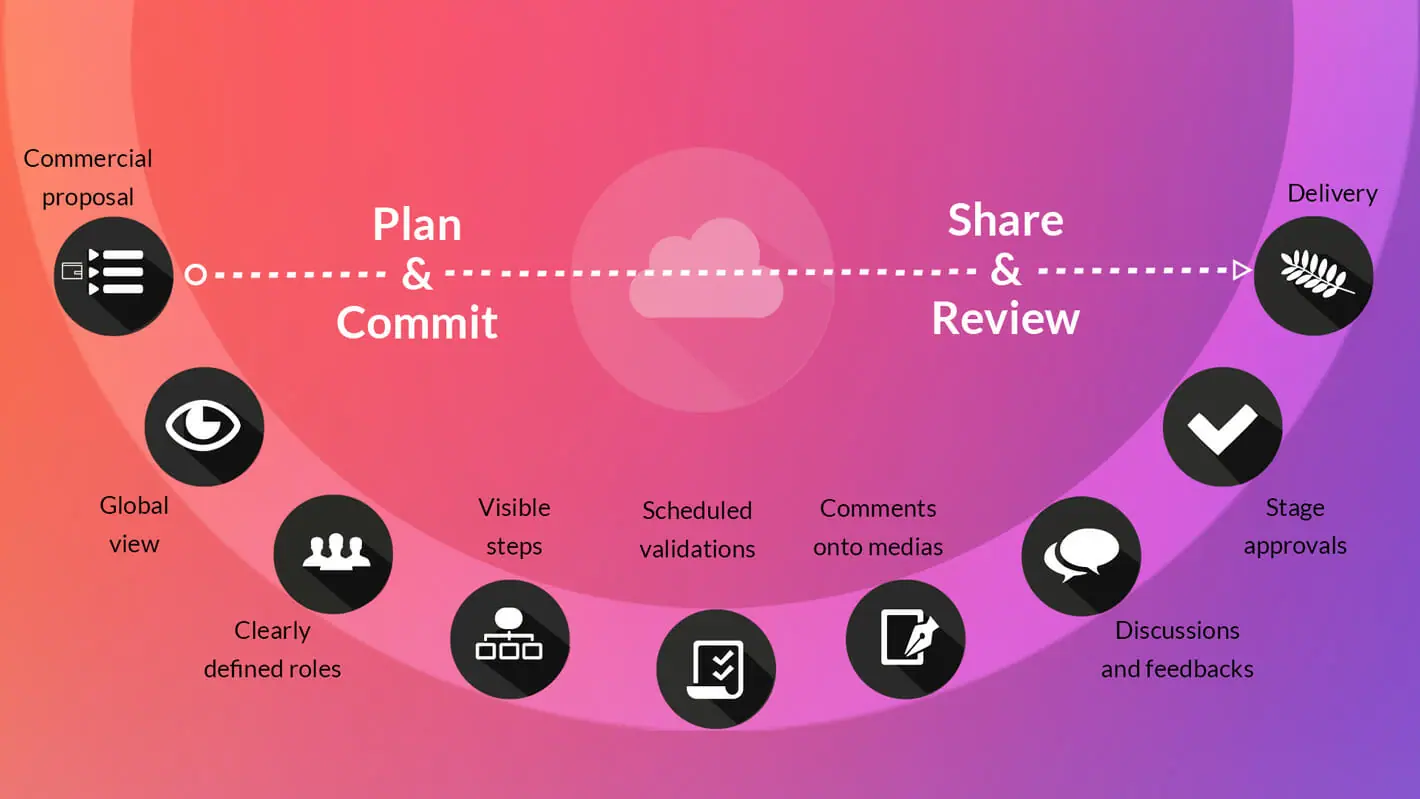Organizing video projects in a shared mode. Organizing and monitoring a project requires tools and methods. Here, everything is shared! Experiences, news, tips and articles to help you get the job done.
Facilitating the approval of a corporate video: our practical advice

Corporate videos play a central role in a company’s communications strategy, whether aimed at an internal or external audience. Creating these videos often involves a complex process of planning, production and, of course, validation. Facilitating the approval of a corporate video is essential to ensure consistency of message, stakeholder satisfaction and the overall success of the project. In this article, we’ll explore some practical tips for simplifying the approval process for your corporate videos.
-
Clearly define the video’s objectives
Before even starting production, it’s crucial to clearly define the objectives of your corporate video. Understand what message you want to convey, who your target audience is and what results you hope to achieve. A precise definition of objectives will facilitate approval by providing a solid basis for assessing the relevance of content.
-
Involve stakeholders from the outset
To avoid major revisions during the approval phase, involve stakeholders right from the start of the process. Hold pre-production meetings to discuss ideas, scenarios and expectations. Early involvement will enable the direction of the film to be adjusted according to initial feedback, thus reducing the risk of disagreements during approval.
-
Drawing up a detailed scenario
Before moving on to the production phase, draw up a detailed scenario. A well thought-out script will provide a clear vision of the video’s content, visual sequences and the message to be conveyed. This will serve as a reference document during validation, helping stakeholders to assess whether the film meets initial expectations.
-
Creating visual models
To make ideas easier to understand, produce visual mock-ups or storyboards. These visual representations enable stakeholders to visualize the final rendering, minimizing potential misunderstandings. Visual mock-ups can be revised more easily than full versions, speeding up the validation process.

Friendly, dynamic planning
-
Transparent communication
Transparent communication is the key to success when validating a corporate film. Keep stakeholders informed throughout the production process. Share progress, discuss potential challenges and be open to feedback. Regular communication helps to avoid surprises when the final film is presented.
-
Organize in-house viewing sessions
Before official validation, organize internal viewing sessions within the company. Solicit internal feedback to identify any necessary adjustments. This preliminary stage enables us to anticipate the concerns of external stakeholders and minimize feedback after full production.
-
Schedule iterative revisions
Approval should not be a rigid process. Plan iterative revision cycles to enable ongoing adjustments. By adopting an iterative approach, you can respond quickly to stakeholder feedback and refine the film as you go along.
-
Choose an approval manager
Designate a person responsible for the validation process. This person will act as a mediator between the various stakeholders, consolidating feedback and making informed decisions to ensure consistency with the original objectives.
-
Use online commenting tools
Facilitate the validation process by using online feedback tools. Dedicated platforms allow stakeholders to leave specific comments at particular points in the video, simplifying feedback management and ensuring a precise understanding of the changes required.
-
Establish clear approval criteria
Before starting the process, establish clear approval criteria. Whether it’s a question of conformity with corporate values, the relevance of the message or visual quality, well-defined criteria facilitate film evaluation and reduce the risk of differences of opinion.
By following these practical tips, you can greatly facilitate the approval of a corporate video. A well-managed validation process ensures that the film meets expectations, effectively communicates the desired message and makes a positive contribution to the company’s overall communication strategy.


